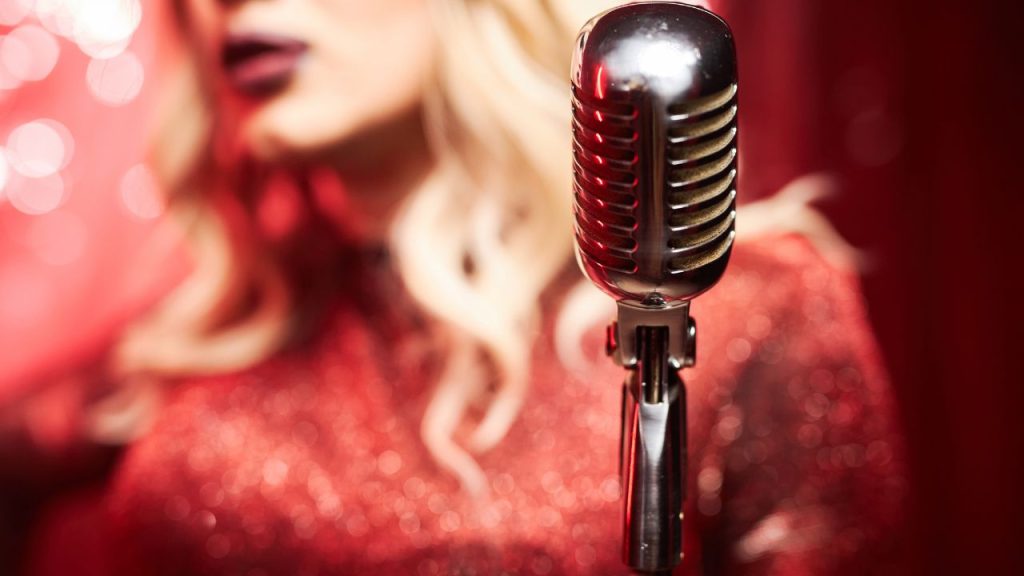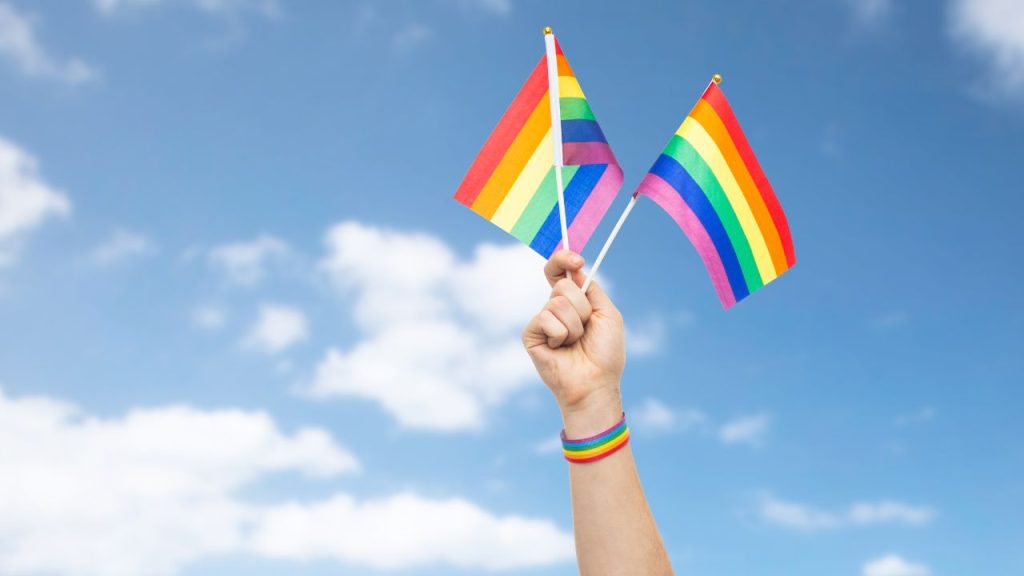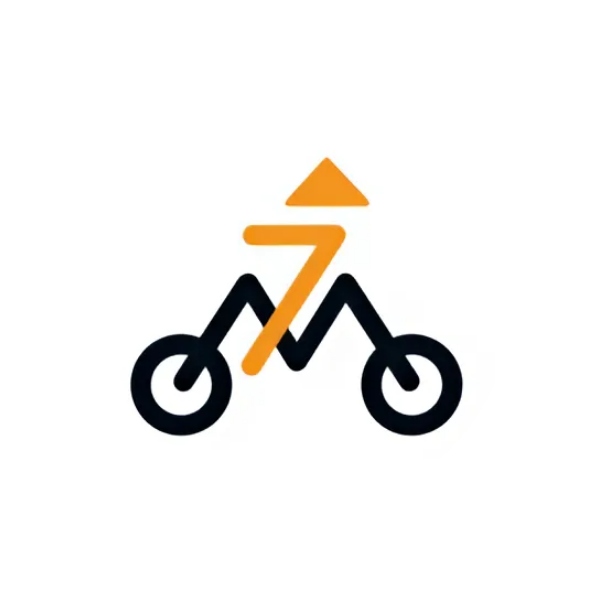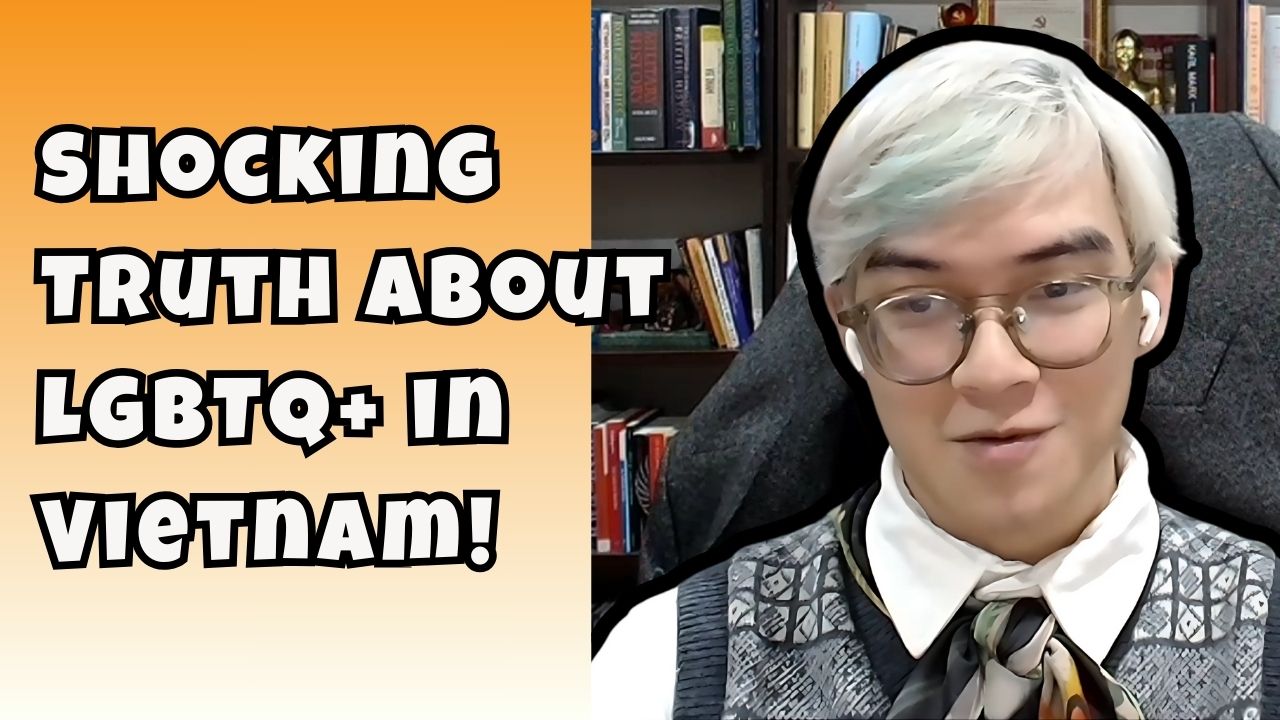My name is Niall Mackay, and I am the founder of Seven Million Bikes Podcasts as well, and provide podcasting services. I am also the host of A Vietnam Podcast, where my guests and I share stories, and insights relating to Vietnam.
My guest this time is Gia Nguyen, a Hanoi-born assistant brewer, former drag queen, and queer party organizer.
Gia shared his personal journey—reflecting on childhood experiences, family support, and the scene of LGBT in Vietnam From facing bullying for being flamboyant to helping shape queer nightlife, Gia’s story offers a unique insight into Vietnam’s quiet but steady shift toward acceptance.
Craft Beer Scene in Vietnam
When I sat down with Gia Nguyen for this episode, I was excited to talk about his fascinating journey—one that spans brewing craft beer, performing as a drag queen, and organizing queer events in Hanoi. But before diving into his life in the drag scene, I wanted to start with something we both have a passion for: beer.
Gia is an assistant brewer at Overmorrow, a well-known craft brewery in Hanoi. When I asked him about his favorite beer, he didn’t hesitate. “It’s called Sunset,” he explained. “It’s a farmhouse ale brewed with mountainous spices.” I had tried Sunset before, and it was absolutely delicious.
Vietnam’s craft beer scene has come a long way since I first arrived in 2015. Coming from Wellington, New Zealand—where craft beer is a huge deal—I was surprised that there weren’t many options when I first came to Vietnam. Platinum Beer was around, but I hadn’t come across it at the time. Then Pasteur Street Brewing Company opened, and it felt like the scene exploded overnight.
For a while, it seemed like new craft breweries were popping up everywhere. The market has leveled out a bit now, but there are still exciting developments. Seven Bridges, for example, originally from Da Nang, has expanded to Saigon and Hanoi. I genuinely love their beer!
Gia mentioned he’d be visiting Saigon in April, so I made sure to tell him we’d catch up when he was in town.
Listen More: Vietnam Cocktail Bars: Underrated, Overrated or Properly Rated
From Boredom to the Stage: Gia Nguyen’s Drag Queen Journey
After talking beer, I was eager to hear about another side of Gia’s life—his time as a drag queen. And trust me, that story was just as fascinating.
When I asked him about it, he admitted he wasn’t performing anymore, but his journey into the world of drag had been anything but planned.
“It started very abruptly,” he told me. “I was really, really bored back in 2018.” Like many people around the world, he had found himself deep in a RuPaul’s Drag Race binge. But for Gia, it wasn’t just entertainment – it was inspiration.
At the time, Hanoi had a small but passionate drag scene. There were RuPaul’s Drag Race viewing parties every weekend, and one night, Gia decided to check one out.
That was all it took for Gia to feel inspired. After just two weeks of attending these shows, he thought, Maybe this is something I could do. Just within a couple of weeks, he was getting ready for his first performance.
He had a custom-made dress created by a friend, put on a wig, and gathered everything he needed for a full production—makeup, photos, and stage presence.

Fascination of Drag Queen Performances
I had to admit, I didn’t know much about the world of drag beyond the few shows I had seen. Drag performances were always high-energy, fun, and full of personality, but I wanted to understand what drew people to it. “What’s the attraction of dressing up as another gender?” I asked.
For many, drag is more than just dressing up—it’s a powerful form of self-expression. Some performers might already embrace elements of drag in their daily lives, but stepping onto the stage allows them to amplify that expression, embracing glamour, artistry, and theatricality. Gia saw drag as exactly that—an art form rather than just a costume.

His involvement in the scene didn’t stop at performing. He became the organizer of Peach, a party that initially focused on drag shows but quickly grew into a broader queer space. It became a place where people, regardless of their gender identity or sexual orientation, could explore self-expression through performance, fashion, and art.
As someone with a background in stand-up comedy, I could relate to the idea of stepping into a persona on stage. Drag queens and kings are often larger than life—flamboyant, bold, and full of energy. But offstage, they might be completely different people.
Though he eventually stepped away from performing, Gia remained deeply connected to the drag scene. Through Peach, he continued to foster a space for creativity, community, and authenticity. What had started as a spontaneous decision—born out of boredom one weekend—had transformed into something far more meaningful, both for him and for the growing queer scene in Hanoi.
Drag, Family, and the Journey to Acceptance
Coming out as a drag queen—or even just being part of the LGBTQ+ community—can be a complicated experience, especially when it comes to family. For Gia, the process of telling his parents about his drag performances wasn’t as dramatic as some might expect. His parents, both from an older generation, had already navigated the process of understanding his identity years before.
Coming-out Process
Gia explained that he never really had a formal coming-out moment. Instead, someone had outed him when he was around 15 or 16, which meant his parents had already had time to adjust to the reality of having a queer son. By the time he got into drag, it wasn’t a huge shock—it was just another part of who he was.
At first, his parents didn’t fully grasp what drag was. He had been performing for a few months before they started noticing—mainly because he was coming home in full makeup and costume in the early hours of the morning. It wasn’t something he could hide. Instead of reacting negatively, they were simply curious. Gia took the opportunity to show them videos from RuPaul’s Drag Race and explain that drag was a form of artistic expression, not something that changed who he was as a person.
Social Acceptance and Barriers
Despite their support, there were limits. His parents, being older, never attended any of his shows. It wasn’t that they disapproved—it was just hard to imagine bringing a 70-year-old father into a nightclub filled with flamboyant performances, loud music, and outrageous costumes. Gia laughed at the thought, knowing that while his dad supported him, he was unlikely to ever step foot into a drag club.
This conversation made me reflect on my own journey of understanding and acceptance. I shared a personal story about how I had grown up with homophobic attitudes, influenced by the culture around me. It wasn’t until I worked at a summer camp in the U.S. and met an openly bisexual friend that I had a moment of realization—sexuality wasn’t something that should define how I treated others. From that point on, my perspective shifted, and I made a conscious effort to educate myself and change.

Gia acknowledged that while some people, like my grandfather, could change over time, others weren’t as lucky. Many people in Vietnam still struggle with family acceptance, just as they do in other parts of the world. Some parents never come around to understanding their children’s identities, making it difficult for many in the LGBTQ+ community to be their true selves.
Being queer isn’t a choice or a “lifestyle.” It’s simply who someone is. Growing up, he had always been flamboyant—something that had made him a target for bullying. His parents couldn’t shield him from that, but they had seen it for what it was: a natural part of who he was.
Identity, Expression, and the Path to Acceptance
What struck me most was Gia’s perspective on identity. He talked about his partner, who, from an outsider’s point of view, might not seem stereotypically “gay” at all. He loved sports and beer—two things often associated with straight masculinity. But, of course, those interests had nothing to do with his sexuality. Gia made it clear that who someone is attracted to doesn’t dictate their personality or interests.
Drag, in many ways, follows the same logic. It allows people to embrace different aspects of themselves, often stepping outside their usual comfort zones. For Gia, it was never just about the clothes or the makeup—it was about self-expression and creating a space where others could do the same.
While Vietnam is often seen as a conservative country, Gia’s story showed me that attitudes are evolving. The younger generation is more open-minded, and even older generations—like his parents—are learning to understand and accept. It’s not always easy, and not everyone is lucky enough to have a supportive family, but progress is happening.
LGBTQ+ Acceptance in Vietnam: A Culture of Quiet Tolerance
Unlike in some countries where LGBTQ+ rights are a political battleground, Vietnam takes a quieter approach. Discrimination exists, but outright hostility is rare. I asked Gia why Vietnam seemed so accepting.
He pointed to Hầu Đồng, a Vietnamese folk tradition where spirit mediums—often men dressed as female deities—perform sacred rituals. This historical gender fluidity may explain why Vietnamese people, even if unfamiliar with modern LGBTQ+ identities, don’t openly reject them.
Gia also noted that people here tend to keep to themselves. Someone might notice a drag queen walking through Hanoi’s Old Quarter and think, Oh, that’s different, but they wouldn’t confront them. Job discrimination isn’t common either—no one asks, Are you gay? in an interview. While biases exist, they’re more personal than systemic.
The Difference between North and South
Gia also noted that there’s a noticeable difference between the North and South. In Saigon, the LGBTQ+ community is more visible, and people are generally more laid-back and open. Hanoi, being more traditional, is still accepting but in a quieter, more reserved way. Despite these regional differences, he believes the entire country is moving in a positive direction, with younger generations becoming more open-minded.
Still, misconceptions about Vietnam persist. Foreigners who haven’t been here often assume the country is deeply conservative, even repressive. Gia found this amusing. Many people still imagine Vietnam as a “third-world country,” stuck in the past. But as we talked about luxury cars, high-rise apartments, and the booming economy, it was clear that Vietnam is anything but stuck.
Conclusion – The Scene of LGBT in Vietnam
Vietnam’s approach to LGBTQ+ acceptance is unique—quiet, steady, and deeply rooted in cultural traditions rather than political activism. As younger generations push for more open discussions and representation, Vietnam is proving that change doesn’t always have to be loud to be significant.
If you’re interested in these stories, follow A Vietnam Podcast for more!


stilnox ordonnance sГ©curisГ©e: calmants sans ordonnance – prix test covid en pharmacie sans ordonnance
medicijn recept: Medicijn Punt – digitale apotheek
d vitamin apotek: nagelsvamp hГ¤nder bilder – billigt recept
http://zorgpakket.com/# online apotheek zonder recept
https://tryggmed.shop/# lagerstatus apotek
kuldemaske apotek [url=https://tryggmed.com/#]koronatester apotek[/url] fullmakt skjema apotek
pillen bestellen: apotheke – apotheken
medicijnen bestellen bij apotheek: Medicijn Punt – med apotheek
http://zorgpakket.com/# online medicijnen bestellen met recept
recept medicijnen: medicijn recept – medicijnen op recept
hГҐrolje apotek [url=http://tryggmed.com/#]Trygg Med[/url] loppemiddel hund apotek
astmamedicin receptfri: power rabattkod – hemkГ¶rning apotek
https://snabbapoteket.shop/# vätskeersättning engelska
https://zorgpakket.com/# online medicijnen kopen zonder recept
acne plГҐster apotek: Snabb Apoteket – lГ¤kemedel barn gratis
halsfluss test apotek [url=https://snabbapoteket.shop/#]Snabb Apoteket[/url] billigast apotek
apotek knГ¤skydd: katt vitlГ¶k – hГ¶rapparat pris
http://snabbapoteket.com/# inositol apotek
huisapotheek online: MedicijnPunt – medicijnen bestellen online
fotsopp apotek [url=http://tryggmed.com/#]apotek sverige online[/url] fingerbeskyttelse apotek
ГҐpent apotek: salt vann apotek – aceton apotek
https://zorgpakket.shop/# recept medicijn
https://tryggmed.com/# medisiner på nett
belgische online apotheek: MedicijnPunt – apotheek spanje online
blodtryck pГҐ apotek: vad betyder apotek – omeprazol 10 mg
badetermometer baby apotek [url=https://tryggmed.com/#]skin tag fjerner apotek[/url] flГҐttvaksine apotek
http://snabbapoteket.com/# alunstift apotek
calamine lotion apotek: SnabbApoteket – naproxen apotek
covid vaksine apotek: TryggMed – apotek ГҐpent 1 juledag
online medicijnen bestellen met recept [url=https://zorgpakket.com/#]Medicijn Punt[/url] farmacia online
https://tryggmed.com/# bestille medisiner
https://zorgpakket.shop/# apotheek online nl
best online pharmacy generic viagra: ExpressCareRx – ambien pharmacy no prescription
https://medimexicorx.com/# mexican pharmaceuticals online
ExpressCareRx [url=https://expresscarerx.org/#]sildenafil citrate pharmacy[/url] ExpressCareRx
IndiaMedsHub: world pharmacy india – IndiaMedsHub
pharmacy in artane castle: can i buy viagra in a pharmacy – what’s the best online pharmacy
https://medimexicorx.com/# mexico drug stores pharmacies
http://medimexicorx.com/# mexican mail order pharmacies
best mexican pharmacy online [url=https://medimexicorx.com/#]accutane mexico buy online[/url] tadalafil mexico pharmacy
vasco rx specialty pharmacy: united kingdom online pharmacy – ExpressCareRx
https://indiamedshub.shop/# IndiaMedsHub
ExpressCareRx [url=https://expresscarerx.online/#]uf pharmacy online refill[/url] cheap pharmacy viagra
MediMexicoRx: best prices on finasteride in mexico – accutane mexico buy online
finasteride mexico pharmacy: cheap mexican pharmacy – MediMexicoRx
https://medimexicorx.shop/# mexico drug stores pharmacies
http://expresscarerx.org/# mirtazapine pharmacy
amoxicillin mexico online pharmacy [url=https://medimexicorx.com/#]buy cheap meds from a mexican pharmacy[/url] MediMexicoRx
IndiaMedsHub: buy prescription drugs from india – IndiaMedsHub
https://expresscarerx.online/# evelyn bradley pharmacy artane
IndiaMedsHub: IndiaMedsHub – IndiaMedsHub
ExpressCareRx [url=https://expresscarerx.online/#]365 pharmacy kamagra[/url] ExpressCareRx
india pharmacy: india online pharmacy – IndiaMedsHub
https://indiamedshub.shop/# indianpharmacy com
IndiaMedsHub: IndiaMedsHub – best online pharmacy india
https://expresscarerx.online/# lortab pharmacy online
cheapest online pharmacy india [url=http://indiamedshub.com/#]india pharmacy[/url] world pharmacy india
http://medimexicorx.com/# MediMexicoRx
IndiaMedsHub: IndiaMedsHub – IndiaMedsHub
buy antibiotics over the counter in mexico: buy neurontin in mexico – low cost mexico pharmacy online
ExpressCareRx [url=http://expresscarerx.org/#]motilium inhouse pharmacy[/url] ExpressCareRx
https://medimexicorx.com/# medicine in mexico pharmacies
IndiaMedsHub: IndiaMedsHub – online shopping pharmacy india
ExpressCareRx: Nolvadex – no prior prescription required pharmacy
http://indiamedshub.com/# india pharmacy
india pharmacy mail order [url=http://indiamedshub.com/#]IndiaMedsHub[/url] world pharmacy india
https://expresscarerx.org/# ExpressCareRx
ExpressCareRx: ExpressCareRx – health express pharmacy+artane castle
trusted mexican pharmacy: MediMexicoRx – MediMexicoRx
https://expresscarerx.org/# amazon online pharmacy
legit non prescription pharmacies [url=https://expresscarerx.org/#]online pharmacy no prescription lasix[/url] ExpressCareRx
cheap Propecia Canada: Finasteride From Canada – cheap Propecia Canada
https://lexapro.pro/# lexapro 15mg
generic sertraline [url=https://zoloft.company/#]purchase generic Zoloft online discreetly[/url] buy Zoloft online
cheap Zoloft: Zoloft Company – buy Zoloft online
purchase generic Accutane online discreetly: Isotretinoin From Canada – purchase generic Accutane online discreetly
http://isotretinoinfromcanada.com/# Isotretinoin From Canada
https://tadalafilfromindia.com/# tadalafil online no rx
generic sertraline [url=https://zoloft.company/#]generic sertraline[/url] buy Zoloft online without prescription USA
Cialis without prescription: medicine tadalafil tablets – tadalafil online 10mg
purchase generic Accutane online discreetly: order isotretinoin from Canada to US – generic isotretinoin
http://isotretinoinfromcanada.com/# buy Accutane online
Zoloft Company [url=https://zoloft.company/#]buy Zoloft online[/url] buy Zoloft online
Finasteride From Canada: Finasteride From Canada – Propecia for hair loss online
best price for lexapro generic: Lexapro for depression online – lexapro tablets australia
https://zoloft.company/# cheap Zoloft
https://lexapro.pro/# cheapest price for generic lexapro
tadalafil online no rx [url=https://tadalafilfromindia.com/#]Cialis without prescription[/url] buy Cialis online cheap
sertraline online: Zoloft for sale – cheap Zoloft
buy Zoloft online: generic sertraline – cheap Zoloft
https://isotretinoinfromcanada.shop/# isotretinoin online
Lexapro for depression online [url=https://lexapro.pro/#]lexapro online prescription[/url] Lexapro for depression online
isotretinoin online: isotretinoin online – order isotretinoin from Canada to US
Lexapro for depression online: lexapro coupon – buy lexapro
https://lexapro.pro/# lexapro online
https://finasteridefromcanada.shop/# generic Finasteride without prescription
buy Cialis online cheap: Cialis without prescription – buy Cialis online cheap
cheap Accutane [url=http://isotretinoinfromcanada.com/#]isotretinoin online[/url] isotretinoin online
http://isotretinoinfromcanada.com/# isotretinoin online
Lexapro for depression online: buy lexapro brand name online – lexapro 10 mg price in india
purchase generic Accutane online discreetly: cheap Accutane – Accutane for sale
https://lexapro.pro/# lexapro prescription
Isotretinoin From Canada [url=http://isotretinoinfromcanada.com/#]isotretinoin online[/url] isotretinoin online
buy Zoloft online without prescription USA: buy Zoloft online without prescription USA – Zoloft online pharmacy USA
https://tadalafilfromindia.com/# cheap Cialis Canada
https://zoloft.company/# generic sertraline
Lexapro for depression online: Lexapro for depression online – Lexapro for depression online
Finasteride From Canada [url=https://finasteridefromcanada.com/#]cost of propecia price[/url] generic Finasteride without prescription
Lexapro for depression online: Lexapro for depression online – Lexapro for depression online
https://finasteridefromcanada.com/# generic Finasteride without prescription
lexapro generic brand name: canada pharmacy lexapro – canada pharmacy lexapro
generic Cialis from India [url=https://tadalafilfromindia.com/#]tadalafil online no rx[/url] buy Cialis online cheap
generic Cialis from India: buy Cialis online cheap – Cialis without prescription
http://finasteridefromcanada.com/# Finasteride From Canada
https://isotretinoinfromcanada.com/# buy Accutane online
Zoloft Company: sertraline online – Zoloft Company
Lexapro for depression online [url=https://lexapro.pro/#]where can i buy lexapro online[/url] generic brand for lexapro
cheap Cialis Canada: generic Cialis from India – buy Cialis online cheap
https://zoloft.company/# buy Zoloft online without prescription USA
purchase generic Accutane online discreetly: Accutane for sale – USA-safe Accutane sourcing
Zoloft Company [url=https://zoloft.company/#]purchase generic Zoloft online discreetly[/url] Zoloft online pharmacy USA
https://isotretinoinfromcanada.com/# order isotretinoin from Canada to US
https://zoloft.company/# buy Zoloft online without prescription USA
cheap Accutane: cheap Accutane – cheap Accutane
generic Cialis from India [url=https://tadalafilfromindia.com/#]generic Cialis from India[/url] buy Cialis online cheap
https://isotretinoinfromcanada.shop/# Accutane for sale
Zoloft Company: Zoloft online pharmacy USA – purchase generic Zoloft online discreetly
generic Finasteride without prescription: propecia without a prescription – Propecia for hair loss online
Tadalafil From India [url=http://tadalafilfromindia.com/#]tadalafil online no rx[/url] generic Cialis from India
Lexapro for depression online: lexapro brand name discount – Lexapro for depression online
Cialis without prescription: buy Cialis online cheap – Cialis without prescription
https://isotretinoinfromcanada.shop/# cheap Accutane
buy Accutane online [url=https://isotretinoinfromcanada.com/#]Isotretinoin From Canada[/url] buy Accutane online
order cheap propecia tablets: cheap Propecia Canada – cheap Propecia Canada
cheap Accutane: Accutane for sale – Isotretinoin From Canada
buy cheap propecia pill [url=http://finasteridefromcanada.com/#]Finasteride From Canada[/url] Propecia for hair loss online
buy Zoloft online without prescription USA: purchase generic Zoloft online discreetly – purchase generic Zoloft online discreetly
Lexapro for depression online: cheapest price for generic lexapro – lexapro 20 mg tablet
https://zoloft.company/# Zoloft online pharmacy USA
Zoloft Company: buy Zoloft online – Zoloft online pharmacy USA
buy tadalafil 100mg: Cialis without prescription – cheap Cialis Canada
Finasteride From Canada: Finasteride From Canada – Propecia for hair loss online
http://isotretinoinfromcanada.com/# cheap Accutane
buy Accutane online: Isotretinoin From Canada – cheap Accutane
purchase generic Accutane online discreetly [url=http://isotretinoinfromcanada.com/#]Accutane for sale[/url] isotretinoin online
Tadalafil From India: buy Cialis online cheap – Cialis without prescription
Relief Meds USA: order corticosteroids without prescription – anti-inflammatory steroids online
antibiotic treatment online no Rx: amoxicillin 200 mg tablet – low-cost antibiotics delivered in USA
ClearMeds Direct [url=http://clearmedsdirect.com/#]Clear Meds Direct[/url] order amoxicillin without prescription
http://neuroreliefrx.com/# gabapentin 300 mg capsule side effects
amoxicillin 1000 mg capsule: order amoxicillin without prescription – antibiotic treatment online no Rx
prednisone 20mg online pharmacy: price of prednisone 5mg – prednisone 0.5 mg
where can i buy amoxicillin over the counter: order amoxicillin without prescription – antibiotic treatment online no Rx
order amoxicillin without prescription [url=http://clearmedsdirect.com/#]order amoxicillin without prescription[/url] amoxicillin 500 mg online
anti-inflammatory steroids online: Relief Meds USA – prednisone 30 mg tablet
https://clomidhubpharmacy.shop/# where buy generic clomid no prescription
order amoxicillin without prescription: price of amoxicillin without insurance – antibiotic treatment online no Rx
Clomid Hub [url=https://clomidhubpharmacy.shop/#]Clomid Hub Pharmacy[/url] can i order generic clomid no prescription
anti-inflammatory steroids online: Relief Meds USA – Relief Meds USA
Wake Meds RX: prescription-free Modafinil alternatives – WakeMeds RX
antibiotic treatment online no Rx: ClearMeds Direct – can we buy amoxcillin 500mg on ebay without prescription
Clomid Hub Pharmacy [url=http://clomidhubpharmacy.com/#]Clomid Hub Pharmacy[/url] where to buy clomid without a prescription
Modafinil for focus and productivity: prescription-free Modafinil alternatives – prescription-free Modafinil alternatives
http://wakemedsrx.com/# nootropic Modafinil shipped to USA
how can i get generic clomid price: Clomid Hub – can i purchase clomid now
what kind of medicine is gabapentin [url=https://neuroreliefrx.com/#]does gabapentin cause blurry vision[/url] gabapentin cause itching
affordable Modafinil for cognitive enhancement: smart drugs online US pharmacy – nootropic Modafinil shipped to USA
order corticosteroids without prescription: anti-inflammatory steroids online – prednisone without rx
Clomid Hub: how to get clomid – buy clomid
is gabapentin used as an antidepressant [url=https://neuroreliefrx.com/#]gabapentin spinal surgery[/url] gabapentin 300 mg cap teva
can you get gabapentin: gabapentin generic – gabapentin mg tablets
wakefulness medication online no Rx: Modafinil for ADHD and narcolepsy – safe Provigil online delivery service
http://clearmedsdirect.com/# low-cost antibiotics delivered in USA
amoxicillin 30 capsules price [url=http://clearmedsdirect.com/#]low-cost antibiotics delivered in USA[/url] order amoxicillin without prescription
Clomid Hub Pharmacy: Clomid Hub – Clomid Hub
anti-inflammatory steroids online: order corticosteroids without prescription – prednisone 1 mg for sale
Clomid Hub Pharmacy: Clomid Hub – Clomid Hub Pharmacy
where can i buy cheap clomid price: Clomid Hub Pharmacy – Clomid Hub Pharmacy
where to buy Modafinil legally in the US [url=https://wakemedsrx.shop/#]where to buy Modafinil legally in the US[/url] safe Provigil online delivery service
prednisone 40 mg rx: 40 mg prednisone pill – Relief Meds USA
NeuroRelief Rx: gabapentin gastrointestinal side effects – can i get fluoxetine
Modafinil for focus and productivity: WakeMeds RX – buy Modafinil online USA
anti-inflammatory steroids online [url=https://reliefmedsusa.shop/#]20 mg of prednisone[/url] prednisone 10 tablet
https://clearmedsdirect.shop/# antibiotic treatment online no Rx
ReliefMeds USA: anti-inflammatory steroids online – Relief Meds USA
order corticosteroids without prescription: ReliefMeds USA – Relief Meds USA
ClearMeds Direct: ClearMeds Direct – order amoxicillin without prescription
how can i get cheap clomid for sale [url=http://clomidhubpharmacy.com/#]can i order cheap clomid[/url] can you get clomid now
Clear Meds Direct: ClearMeds Direct – can you buy amoxicillin over the counter canada
Relief Meds USA: order corticosteroids without prescription – order corticosteroids without prescription
NeuroRelief Rx: fluoxetine without dr prescription – NeuroRelief Rx
NeuroRelief Rx [url=http://neuroreliefrx.com/#]NeuroRelief Rx[/url] NeuroRelief Rx
http://clearmedsdirect.com/# ClearMeds Direct
order amoxicillin without prescription: order amoxicillin without prescription – Clear Meds Direct